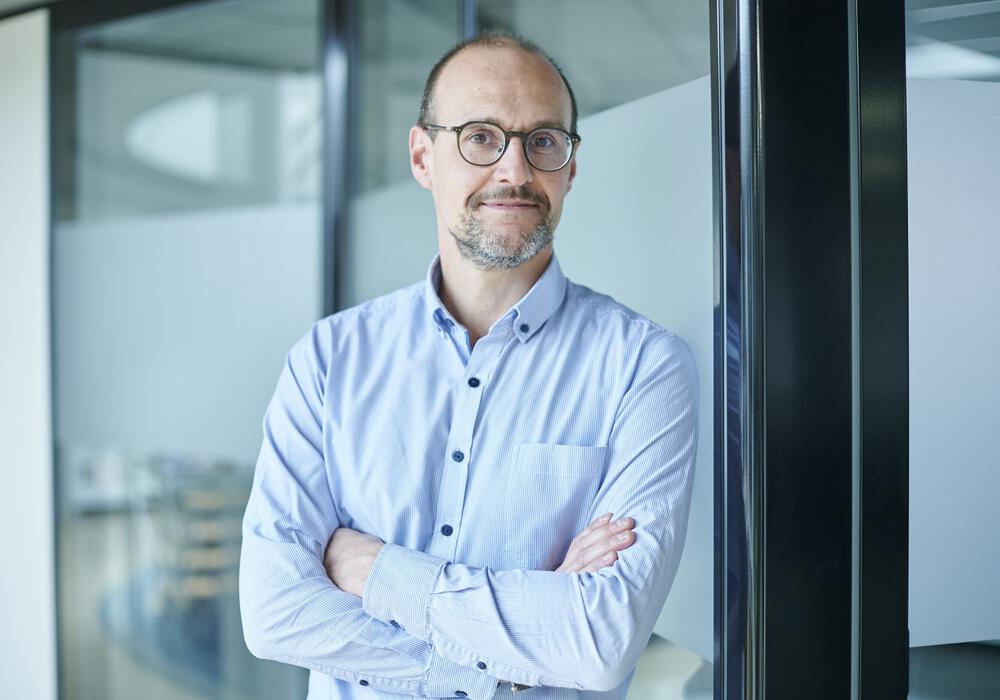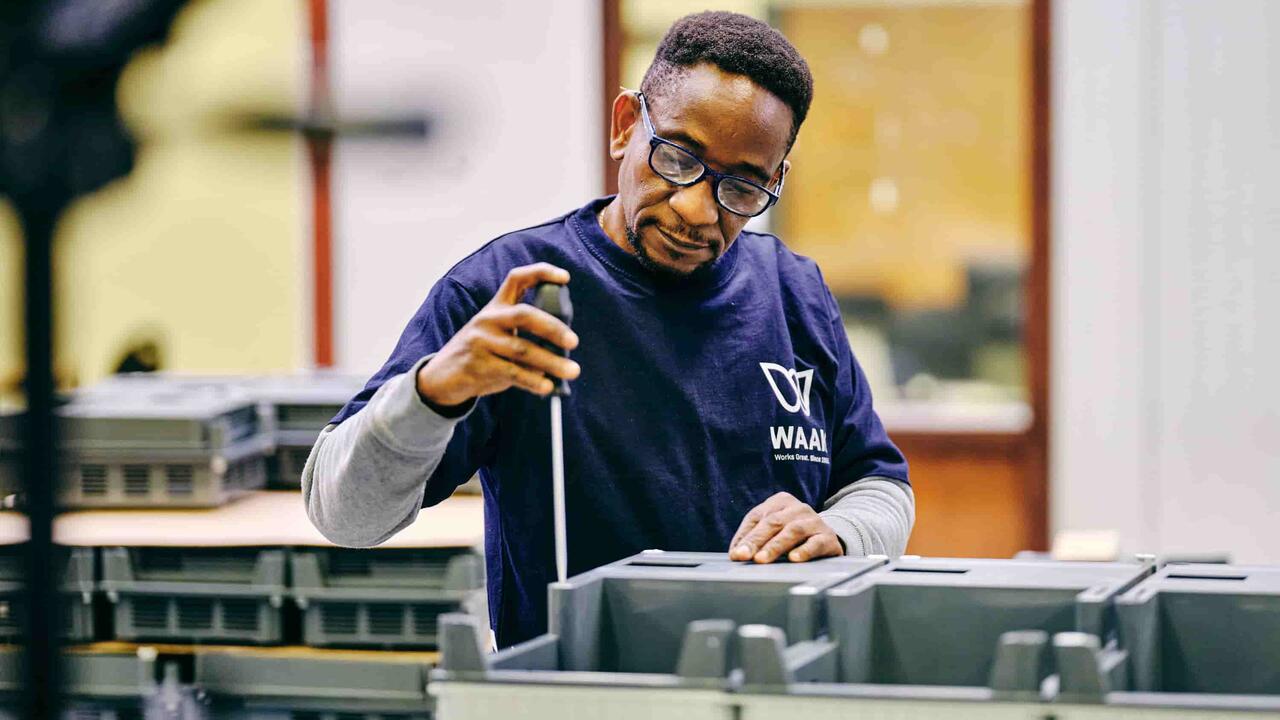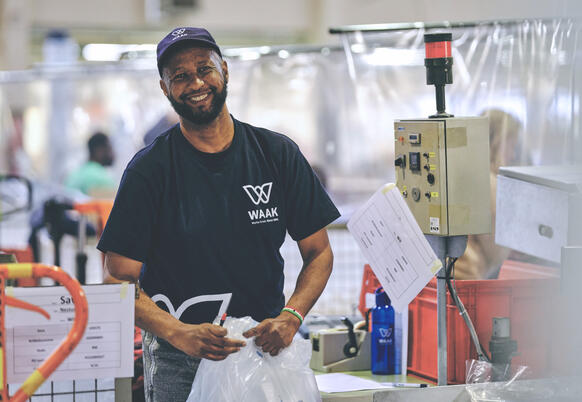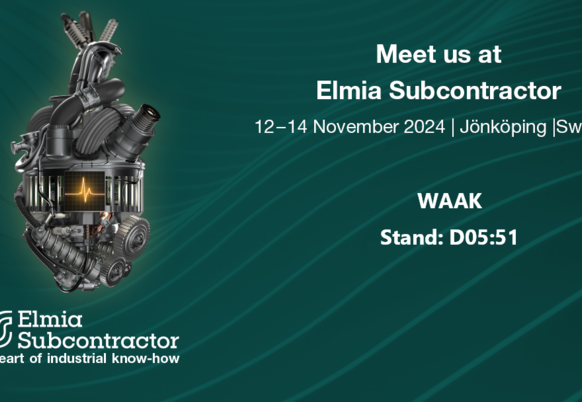WAAK assembles Fluvius' smart meters and meter banks
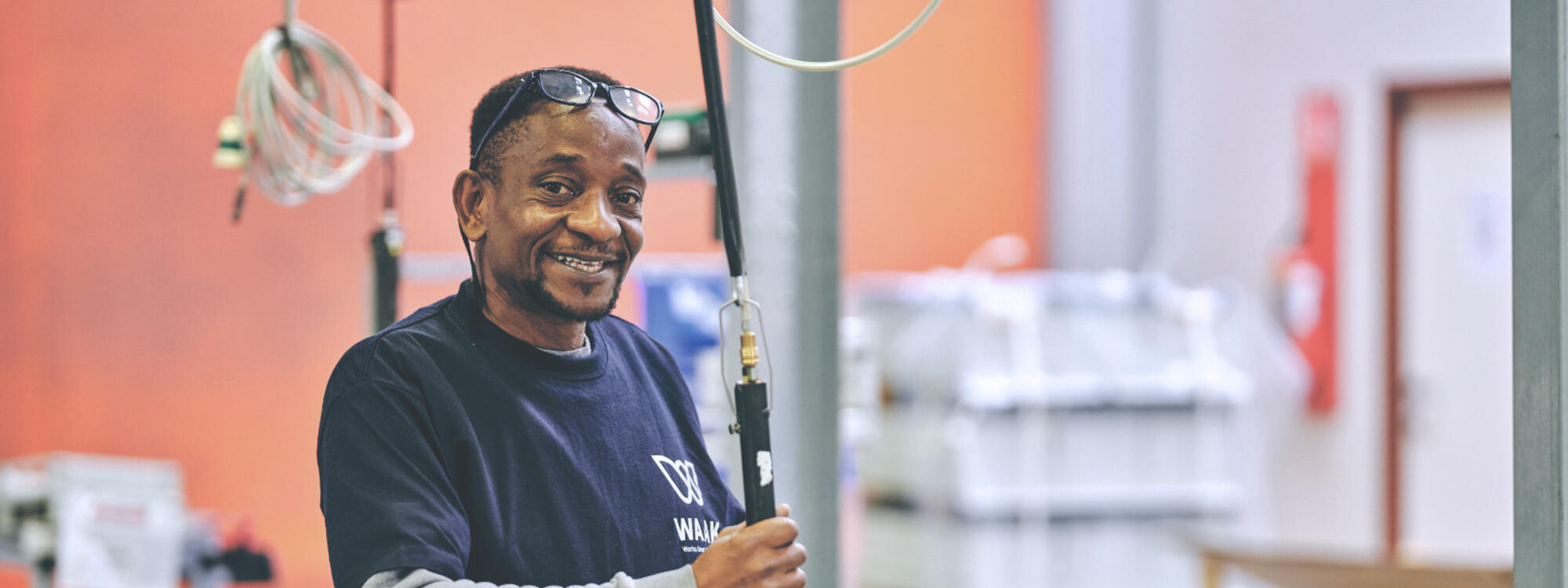
Smart meters are on the rise. In apartments, more and more analogue gas and electricity meters are being replaced by meter banks. A meter bank is a series of connected smart meters. It is our job to assemble meter banks and provide electrical cabling. We wanted to involve our workers as much as possible, so to ensure success it was important to reduce the variability of the tasks in this assignment. It was also necessary to train our staff thoroughly. We achieved this by relying on training and support software, as well as personal coaching. We have found these to be the key ingredients for success. In our experience, these are the elements required to close the gap between the often complex demands of our customers and the limitations of our workers.
Cable and final assembly of smart meters and meter banks
Throughout Flanders, analogue energy meters are being replaced by digital smart meters. In apartment buildings they have to make room for meter banks. A meter bank consists of several connected smart meters. It is our job to assemble the meter banks and provide the electrical cabling. 
The gap between customer demands and our workers' skills
Technical rooms in apartments, in which the meter banks are installed, are often small, which makes installation difficult. To make this easier, the configuration – this is the way in which the smart meters are connected – is adapted to the space available. Consequently, no configuration is 100% the same. For our staff, work processes need to be standardised, so we knew that this project would be a challenge for them. It was therefore important to make adaptations and reduce the variations from standard procedures as much as possible. This was a way in which we could close the gap between customer demands and workers’ limitations.
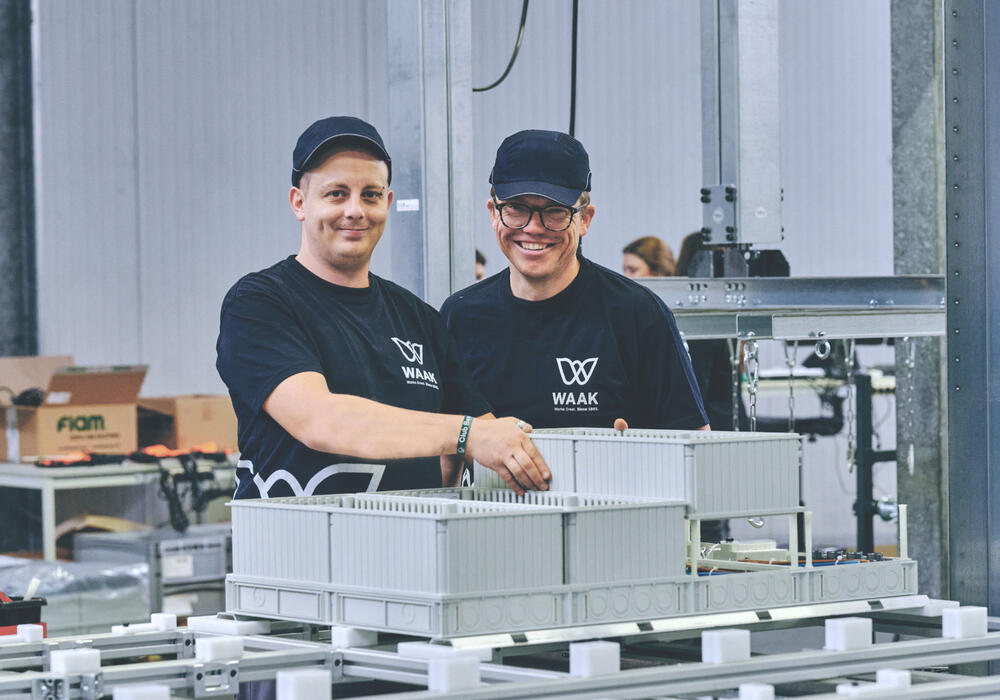
Transforming variation and complexity into serial work
We managed to reduce many of the configurations into four different types. This simplification made the task much more manageable for our workers. We also used software to help our workers to get the job done. At WAAK, developing supportive software is very important. We often use our bespoke in-house program, Smart Coach, to turn assignments into clear, visual instructions. Step by step, they show workers what they have to do. For this project we used the same approach and tools, but, since there were four types of configurations, we needed to develop four different sets of instructions.
Software as a training tool
As a social enterprise, it is our mission to make our workers stronger and more independent. When we developed our training and support software for our workers we took this into consideration and created a three-step system. The first level is the training stage, intended for people who have not yet mastered any activities. As their skills improve, they move to the next level where they’re given more responsibility. The instructions become less and less detailed. By the final stage, they have to be able to distinguish between the different configurations and assemble the meter banks almost independently. Through this process, we use our software as a training tool.
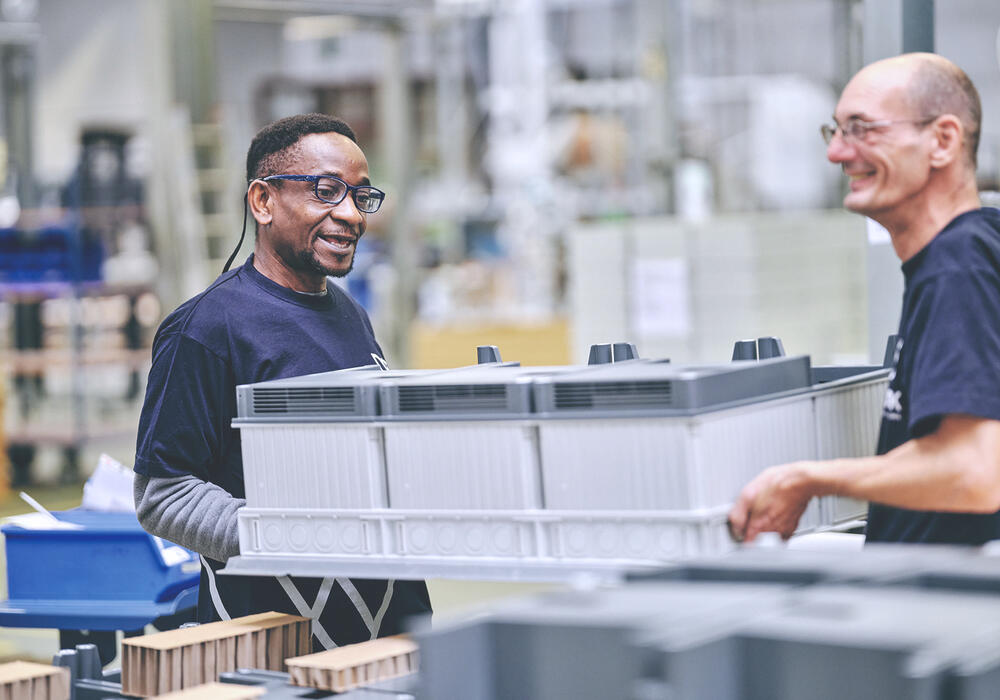
An intensive, yet fruit-bearing project
Although software plays an important role in this project, there’s more to it than that: personal guidance, explanation and regular repetition are just as important. At WAAK we hold training in high regard. We believe in the talent and potential of our people. All that differentiates them from people on the regular labour market is that they just need more time to learn. This project was no exception: the skills that the workers need to learn are not easy, so it can take time for them to master everything. Project engineer Koen Velghe says: “Initially, you have to do all the tasks alongside the worker and repeat them over and over until they have mastered the entire process”. It is a very intensive process, but it pays off, not least for our workers. Koen Velghe adds, “They learn a lot and they’re incredibly proud of the end result”.
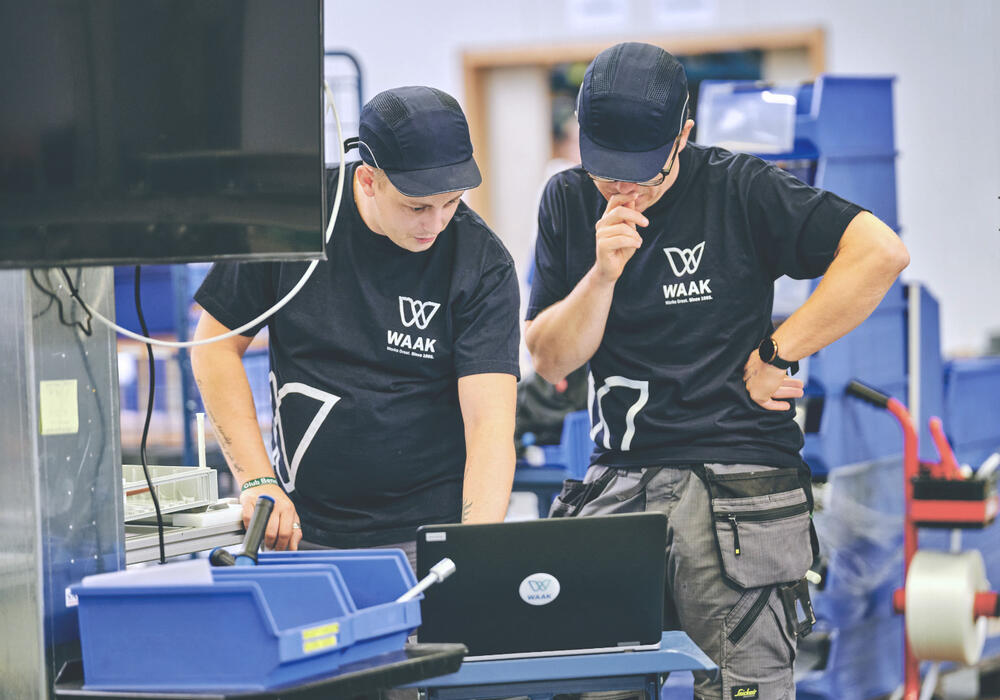
High quality of smart meters thanks to intensive quality control
As a supplier of cables to major international companies such as Daikin and Vaillant, we understand why the highest quality is so important. In order to deliver a product that meets this requirement, we integrate several thorough quality control processes, and we did exactly that for this project. There are two quality control stages: the first is halfway through the process, after the meter bank assembly is complete and the wiring is done. At that point we check that everything is secure. The second and final quality control process comes the end of the journey where everything is subject to another thorough inspection. Our double inspection process ensures that the customer gets a product that meets all their requirements. Thorough quality control is one of the main ingredients in our success story. Koen Velghe notes: “Our workers achieve the same things as employees on the regular labour market, but thanks to the integrated quality control systems, the number of mistakes are very limited.” At WAAK we often say that we’re like any other (regular) company. This meter bank project has proved us right once again. The end result is the same – and often even better – than that of regular companies, only the road to it is different”.
